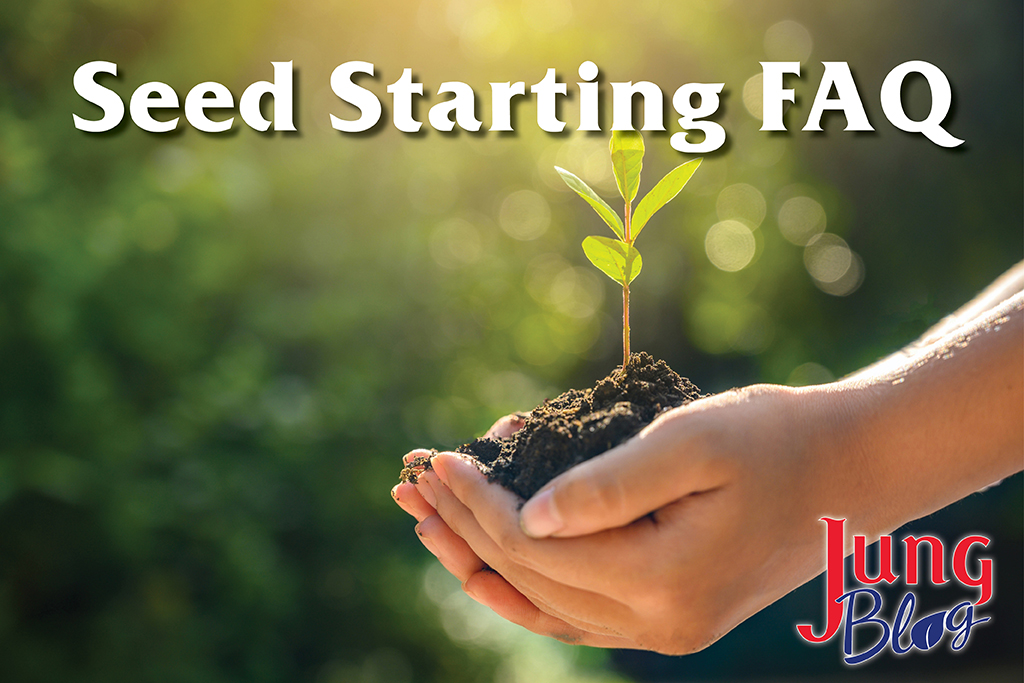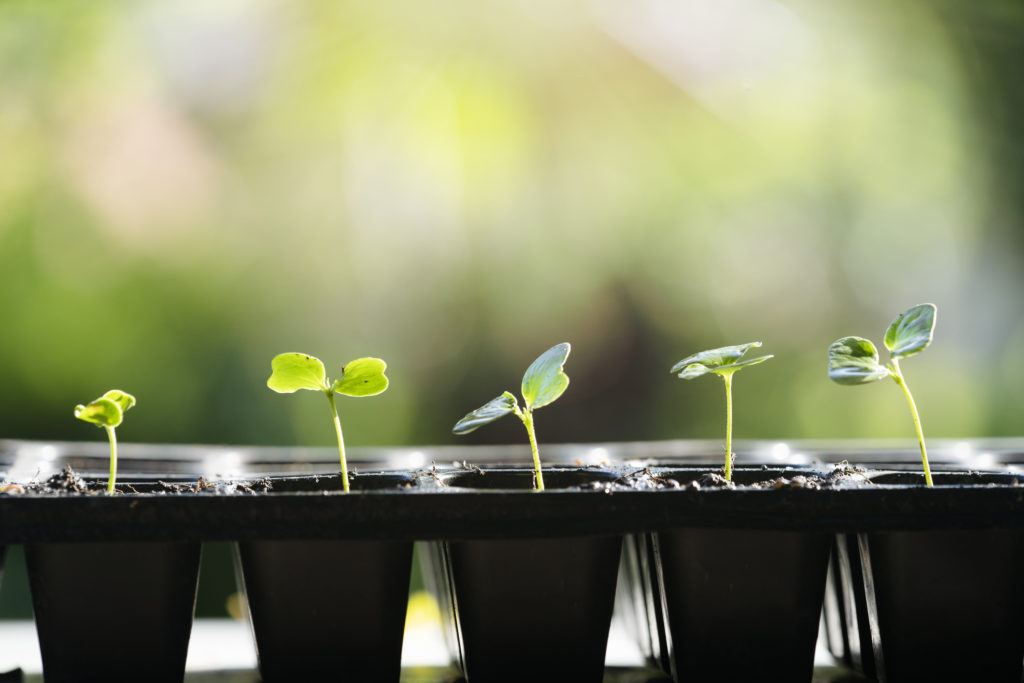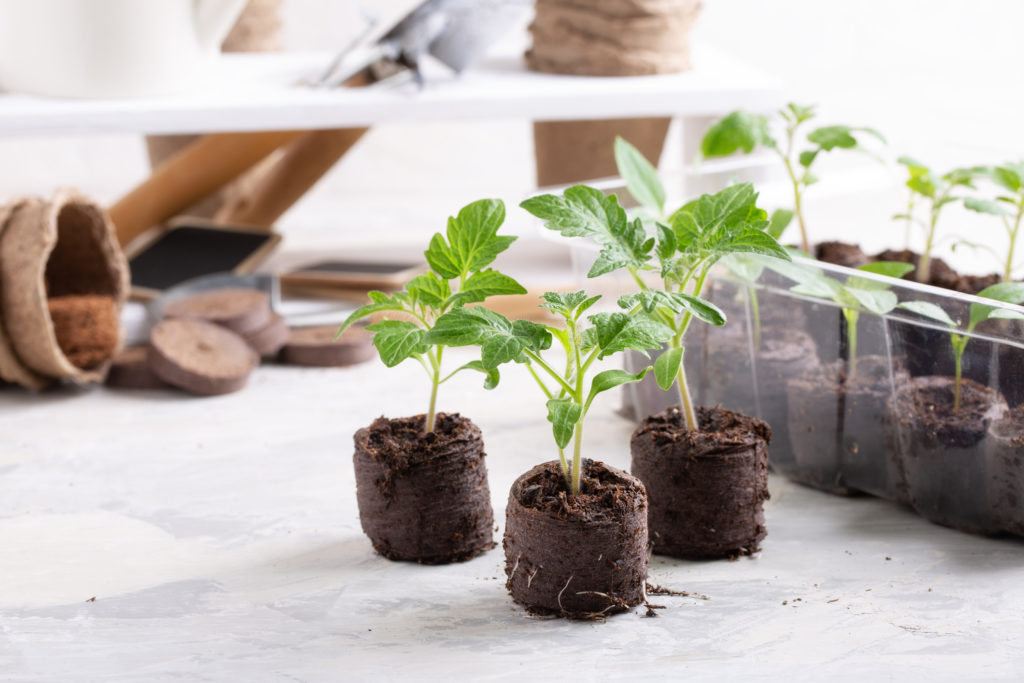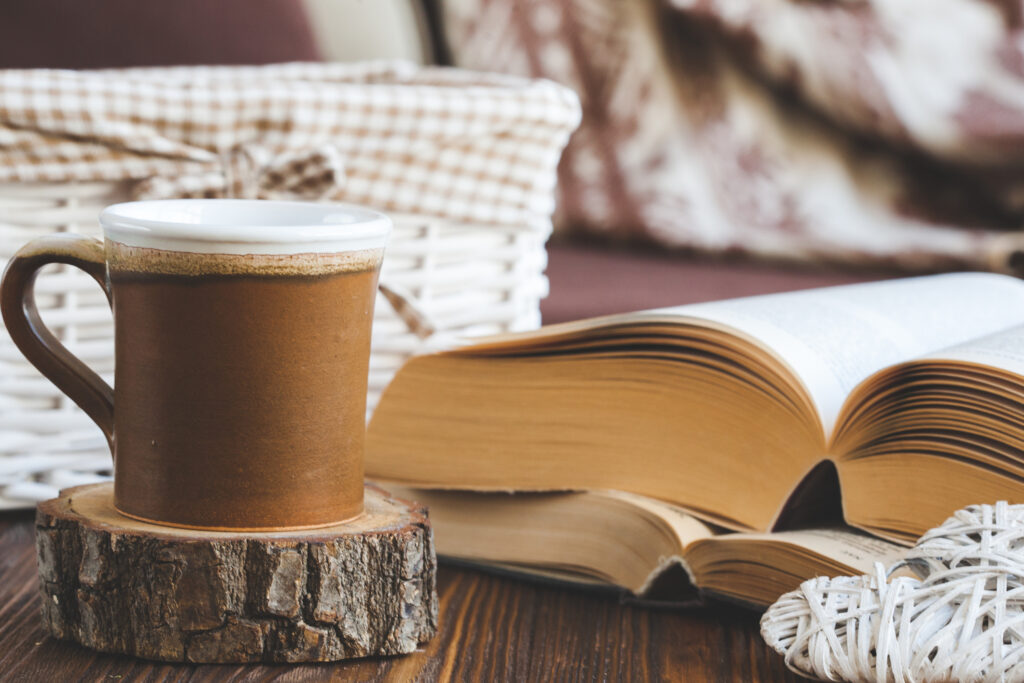
Many types of seeds are easy to grow, but some may require specific temperature, light, or darkness. Detailed germination information is included on our seed packets, and carefully following these instructions is recommended. If no light requirements are stated, light does not play an important role in germination. Remember to plan ahead. It takes 2½ to 4 months for most annuals to bloom from seed. Seedlings are ready to set out in about 8 to 10 weeks.
It’s a good idea to keep a garden journal. Keeping track of start dates, growing conditions, and transplant dates is always helpful for future planting projects. You should also record the varieties used and how well they did in your garden.
Some of the Most Frequently Asked Questions About Seed Starting Are:

What do I need to start seeds indoors?
First, you need a sterile seed starting medium that is fine textured and does not contain high levels of synthetic fertilizers. The Jung Family Garden Seed Starter Mix is perfectly formulated for starting seeds. You will also need a clean tray or container, and a plastic bag or dome. Jung offers many seed starting products designed to help you get your seedlings off to a good start. It is highly recommended to purchase a seedling heat mat to provide bottom heat and you may want to purchase a light system to provide improved light levels to your seedlings.
Can I use regular garden soil to start the seeds?
No. It is not recommended. Garden soils become compacted when used in containers, which makes them unsuitable for starting seeds. Garden soil will also contain potentially harmful fungal pathogens and may contain weed seeds that can cause problems and headaches.

How do I start seeds?
Fill containers with fresh quality seed starting mix. With clean, warm water pre-moisten the starting mix and gently pack the mix into the flat to make a firm seedbed. Try to germinate only one vegetable or flower species in each container as different plants germinate at different rates and may require different temperatures or moisture levels. Sow the seeds at the recommended depth by making a shallow depression in the media and covering the seed lightly with moist media or vermiculite. To increase humidity and reduce moisture loss, you can place each flat into a plastic bag, or use a plastic humidity dome or plastic kitchen wrap, while waiting for the seed to germinate. Keep the trays on a seedling heat mat with the optimum temperature set for whatever variety you are starting. If you elect to not use a heat mat, keep trays in a warm location until the seeds germinate. When seedlings emerge, it is very critical to remove the plastic dome or plastic wrap and place the trays in a cooler, but sunny window with plenty of light, or under artificial lights. Try to keep the temperature around 70° or less and water only when the medium surface dries out.
What is “damping off”?
“Damping off” is a disease that often attacks seedlings at the soil level, causing seedlings to collapse. Damping off is caused by fungal pathogens referred to as water molds. Although caused by water mold fungi, the disease infection is exacerbated by keeping the soil overly wet at the time of germination and seedling growth.
How can I prevent “damping off”?
Practicing excellent sanitation of your planting table and areas will help reduce the susceptibility of harmful water mold. You can prevent damping off by allowing the growing medium to dry out between waters as seedlings grow. A non-toxic biological fungicide like Zonix™ can be used to help protect plants. Zonix™ contains beneficial microbes that colonize leaf and root surfaces, naturally protecting plants from disease infection.
When are my seedlings ready to be transplanted?
When seedlings have 2 or 3 sets of true leaves, or when they are large enough to handle, they are ready to be transplanted. Be sure to transplant before seedlings outgrow the container they are in or become rootbound.
How do I transplant seedlings?

The easiest way to transplant from open flats is to use a sharpened pencil to gently loosen and lift the seedling out of the flat. Pinch or grasp the seedling by the leaves, not the stem, to avoid bruising tender stems. Transplant only the strongest seedlings and leave the others to grow if more plants are needed. When transplanting from a plug tray or cell pack, gently squeeze the sides of the container to loosen the roots, then remove the seedling from the cell by pushing up from the bottom. Transplant into larger containers filled with a good peat-based growing mix. With a finger or pencil, make a hole in the center of the pot that is large enough to easily fit the roots of the seedling. Use the pencil to guide the roots into the hole. Then gently, but firmly, pinch the soil around the plant with your fingers and carefully water the seedling to settle the medium around the roots. Keep the plants in a sunny, cool location.
Can I put the plants outside after I transplant them?
Not right away. Within a week or two of outside planting time, transplants need to be taken outside during the day to “harden off”. In other words, they are toughened up to be able to tolerate outdoor conditions by exposing them to cooler temperatures, brighter sun, and wind. The first day or two they should be out for only a couple hours, but after a week they can be out all day and only brought in if the temperature is going to be too low (below 40 °) or if the weather turns inclement.
My seedlings are tall, spindly, and not very full. What do I do?
If you’re growing annual flowers, pinch the tip of the plant out. This encourages branching and gives your plants a much fuller look that will make your flower borders look nice. Tall, thin seedlings are usually an indication of a lack of light. However, overcrowded seedlings, too much water, and too much fertilizer can also be the cause. Growing your plants in a sunny window at 65-75° and only fertilizing occasionally, at half the recommended concentration can help reduce stretching. Providing artificial light with a plant lighting system will also help to ensure that seedlings are sturdy, with strong stems. Keep the lights close to the plants, about 4 to 6 inches above them, to provide adequate light.
Other Recommended Reading

- Seed Saving: 4 Important Questions To Consider Before Starting
- Sow Seeds Of Victory: Planting A Victory Garden
- Starting Annual Flower Seeds Indoors
- Seed Germination Guide
- 22 Easy To Grow Vegetable Seeds
- Transplanting Seedlings
At Jung Seed Co, we strive to be your go-to guide for all your gardening needs. Our YouTube channel The Garden Doctor by Dick Zondag is where he provides gardening tips for all levels of gardeners. When you need reliable gardening advice, turn to the trusted experts at Jung.
View our new catalog online or browse our website for your gardening favorites. To receive info on new products, exclusive deals, and specials, be sure to sign up for our weekly email. Join our Facebook page, to discuss all things gardening!
